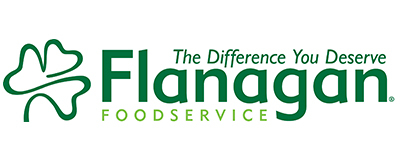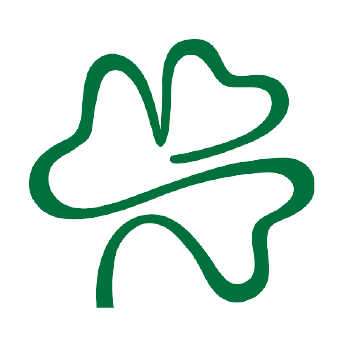
We collect basic website visitor information on this website and store it in cookies. We also utilize Google Analytics to track page view information to assist us in improving our website.

Cascades PRO conducted a survey to find out what consumers expect in terms of hygiene and cleanliness in 2023. Now they are sharing the results and discoveries to help companies respond to their customers' needs.
While hand washing is important in every season, the recent survey reveals that good hygiene is considered more important during the infamous cold season.
So how do you keep your washroom clean and comfortable during winter? We’ll give you all the tips and tricks you need to become a winter pro!
Being a winter pro means understanding users and their behavior during the winter season. The better we understand them, the better equipped we’ll be to meet their expectations and needs in terms of washroom hygiene. For example, 97% of people surveyed believe that washroom cleanliness reflects how much businesses care about their employees and clients.
So how can organizations demonstrate the importance they place on the cleanliness and comfort of their washrooms? By offering something that people closely associate with cleanliness. We're talking, of course, about paper towels.
In fact, many of the survey results reveal why consumers prefer paper!

Winter is the season for chapped hands. Especially with the freezing temperatures drying them out, our hands could do with a little relief during these few months. Cascades PRO may not offer a moisturizer, but it does offer the solution for people who prefer to dry their hands with paper - 73% of those surveyed.
Their Tandem line of dispensers makes paper dispensing easy with their No-Touch technology, perfect for those who have their hands full (hat, scarf, gloves, etc.) after washing.
This interest in paper may be explained by the fact that 61% of people surveyed use paper towels to open the door when leaving public washrooms. As a result, people have a better chance of avoiding potential viruses that could be found on door handles. This explains why 58% of people surveyed believe that paper towels are even more hygienic than other drying options.

Though there is no doubt about their hygienic virtues, the environmental impact of paper towels can be a concern for users. Indeed, according to some popular beliefs, the use of paper in this situation would be harmful to the environment. That's why, as an environmental leader in the industry, Cascades makes sure that positive and always greener actions are put in place.
For example, their dispensers are designed to avoid waste and more than 70% of tissue products are made from 100% recycled fiber. This means that every consumer can leave the washroom with peace of mind.
Whether it's a question of hygiene, good habits, values or environmental protection, Cascades PRO is a sustainable solution for time spent in the washroom. A solution that can be applied to all seasons!

It’s a fact. Restaurants across Canada are on the brink of reopening, whether to patio dining, in-restaurant meals, or both. Diners are understandably excited to return to their favourite culinary haunts. But what about restaurant staff, many of whom have been furloughed for part or all of the pandemic? How safe is it for them to return?
As Jeff Dover, principal of fsSTRATEGY Inc., says, “Very few cases of COVID-19 have been confirmed as spreading in restaurants; this includes areas of the country where indoor dining has been allowed. In short, the restaurant industry was [already] doing a good job of keeping staff safe.”
“Very few cases of COVID-19 have been confirmed as spreading in restaurants. In short, the restaurant industry was [already] doing a good job of keeping staff safe.”
Jeff Dover, principal of fsSTRATEGY Inc.
But keeping restaurant staff safe and having restaurant staff who feel safe are two different things. Canadian Restaurant Workers Coalition has been petitioning provincial governments to improve restaurant workers’ protections like paid sick leave and overtime pay. As reported in the Toronto Star, Not 9 to 5, a non-profit providing resources for mental-health well-being among hospitality workers, recently introduced the Mind Your Health project. The project includes a certification program on workplace safety from a psychological perspective, along with an online survey to collect data on mental-health well-being among hospitality workers.
“The key for me is to ensure that staff wear masks and, even more so, keep six feet apart when possible,” advises Dover. “When staff have to be within six feet (e.g., taking orders, picking up food), the time of exposure should be limited. One of the primary challenges is tight kitchen spaces such as a line with multiple stations not six feet apart. Redesigning the menu to have fewer kitchen stations will help keep the staff safe. COVID-19 is more likely to be transmitted indoors and in close spaces. Redesign your workflows to eliminate or limit such interactions.”
Sanitize regularly. Tables, work surfaces, and other areas, both front and back of house.
Reduce staff sharing. For instance, kitchen staff should never share utensils at back of house.
Change your menuing. Other changes will need to be instituted to ensure the safety of both your guests and your employees. Reusable menus, for instance, may become a thing of the past. Many restaurants, says Dover, are putting QR codes on tables to limit contact with shared items. “When guests request menus, they should be provided with a single use copy. Condiments should not be kept on tables and should be sanitized before use. Cutlery should be rolled and brought to the table after the guests are seated. Simple adjustments like these will assist in limiting the spread of COVID-19 for both guests and staff.”
Appoint a COVID-19 point person. “I recommend having someone responsible each shift to ensure COVID-19 prevention practices are adhered to,” says Dover. “This person could also be the go-to for questions about practices being employed to keep customers and staff safe.”
Organize vaccination days. A number of restaurant chains in the US have said they are providing pay for staff to get vaccinated and are even helping their employees to book appointments.
Offer paid sick days. This is key, says Dover. “You don’t want staff to come to work when they are not feeling well. Take advantage of federal and provincial paid sick day programs if you can. Paying sick days will be less expensive in the long run than having your restaurant closed due to a COVID-19 outbreak.” Should you experience an outbreak, make sure you have records of which employees worked when, along with info on your dine-in restaurant customers and who served them. Contact tracing is key.
Ramp up your communication. Let your staff know what you’re doing to keep them safe, and then inform your guests of the steps you’ve introduced to keep them – and your employees – safe. “If you are able to pay sick days, I would communicate it,” Dover advises. “The restaurant chains in the States paying staff (I heard two to four hours) to get vaccinated received great publicity. We have seen in jurisdictions that have opened up that there is significant pent-up demand. However, not all staff will be comfortable working and not all potential customers will be comfortable in dining rooms. Communication on the safety practices being employed will help alleviate any such fears.”
Employee safety, testing and validation will be key to successful restaurant reopening. Healthcare and foodservice workers may be required to validate their health status before handling food in the post-COVID-19 environment. Here are some protocols you should initiate to ensure the highest level of safety:
Written by Jane Auster and shared with permission from chefconnexion.com.

by Jane Auster
Whether you've closed your restaurant temporarily or converted to takeout, delivery or drive-thru only, the coronavirus offers an opportunity to do the kind of deep cleaning that makes regular spring-cleaning look like a light dusting.
"Cleaning is getting the visible; disinfecting is getting the invisible, the germs, the viruses," said cleaning expert Mark Mellish, owner of Saskatoon Janitorial, in an interview.
1. Think like Mr. Clean. It's not just about cleaning now, it's about sanitizing. That means sanitizing all work surfaces (i.e., countertops, equipment, etc.) and focusing on key touchpoints (tables, chairs, door handles, credit/debit machines, self-serve kiosks, light switches, utensils/plate ware...anywhere hands can carry germs). Back-of-house and front-of-house should both receive heightened attention.
2. Move the furniture. Don't just move tables aside, but disinfect them in the kitchen and move everything away from the area you are disinfecting to prevent chemical contamination.
3. Institute a cleaning schedule. Even without dine-in business and with fewer staff in place, you still need a rigorous cleaning schedule and checklist that you share with all employees. Hourly cleaning may sound excessive, but it will ensure your surfaces remain clean – and likely germ-free.
4. Read the labels. The fine print on cleaning products recommends how long to keep the disinfectants on the surface for them to be effective at killing germs. Also, make sure you're using the right product for the right job. Homemade mixtures with vinegar, for instance, have not been shown to be potent enough against COVID-19.
5. Don't forget your washrooms. While washrooms are removed from the kitchen and dining area, they, too, need extreme cleaning. That means toilets, stalls, hand dryers, toilet paper dispensers, sinks, waste bins, and any other people-facing equipment.
6. Mind your menus. If menus can be discarded, whether they're made of paper or plastic, replace them with new ones. If you have laminated menus and this isn't feasible, disinfect them carefully and "isolate" them from everyday use until it's safe to return to more normal operations. If you've converted to delivery and takeout, likely you're relying on online orders in any case.
7. Remember, the little things count. Deep, COVID-19 cleaning means taking into consideration even the smallest items, such as the salt and pepper shakers. Empty them before cleaning and allow them to air dry before refilling. Empty and thoroughly clean any other tabletop food containers, like ketchup, mustard and vinegar dispensers.
8. Give walls, curtains and blinds a thorough cleansing. COVID-19 is a respiratory virus and not considered to be a food-borne illness. To be on the safe side, clean vertical surfaces, which may carry air-borne pathogens.
9. Let your customers know. Use social media and signage in your front window to tell diners what steps you're taking to keep your operation clean. Use this as an opportunity to keep in touch and keep customers informed and loyal. They'll thank you for the care you're taking.
This post was shared in connection with Brand Points Plus, a FREE loyalty program for independent operators. Easily collect points for amazing rewards, if you're not a member - we highly recommend you become one.
Learn more about Brand Points Plus

Foodservice establishments are typically judged by three things:
Cleanliness, in particular, should be top of mind for all foodservice operators, managers and employees due to the risks associated with improper food handling. By upholding certain standards, restaurant operators can lower these risks, including the spread of harmful germs and bacteria that can surface when raw food, changing of hands and an influx of people are involved.
Cascades has provided several tips to help restaurants navigate the cleaning and maintenance of their back of house (and ace health inspections):
Foodservice establishments should always be health inspection ready.
It’s up to managers to conduct regular in-house inspections to ensure that everything is up to par and that employees are completing tasks appropriately. These inspections, whether daily, weekly or monthly, can help identify what protocols or procedures need to be adjusted or improved before the health inspector sets foot in the restaurant.
There are a lot of different surfaces, tools and cooking devices used in a restaurant kitchen and sometimes cleaning it all can seem a bit daunting.
By establishing a schedule, employees will have a structured and organized plan to guide their shifts’ duties. A cleaning schedule will also put all employees on the same page and spell out exactly what is expected of them and when.
In most foodservice operations, there will be standard operating procedures for the frequency of certain cleanings, such as what tasks to do after each cooking shift, daily, weekly, monthly and annually.
Many health departments check to see if employees have easy access to soap and a sink to clean their hands. To keep germs at bay in restrooms and beyond, foodservice establishments should ensure that soap and hand towel dispensers are properly maintained and well stocked at all times. Placing no-touch dispensers for soap and hand towels in restrooms can help control the spread of harmful bacteria and viruses and make it easier to stay germ-free for both employees and customers alike.
Part of the cleaning schedule and plan should be a list explaining the different surfaces in the kitchen and prep areas that also deserve attention. Employees should be made aware of items or areas of the kitchen that can be easily overlooked, including backsplashes, shelving and movable prep surfaces.
As a restaurant works its way through cleaning protocols, it’s important that employees use high-quality products to complement their efforts.
The spread of food-borne illness is a top concern for department of health inspectors across North America and cross-contamination is a key culprit.
Using colour-coded foodservice wipers can help make it easier to avoid cross-contamination in the kitchen. By introducing a colour-coded system for cleaning, foodservice operators can help employees quickly recognize which wiper to use to clean spills in the dining area and which wiper to use to disinfect prep stations, for example.
For those food establishments that use napkin dispensers, one napkin-at-a-time™ dispensers, like the Cascades PRO Tandem™ countertop interfold napkin dispenser, can help reduce napkin waste by up to 25% and reduce the risk of cross contamination, compared to traditional napkins.
For more foodservice education visit pro.cascades.com. For information on Cascades products, contact your Flanagan sales representative or call 1-855-FLANAGAN.

